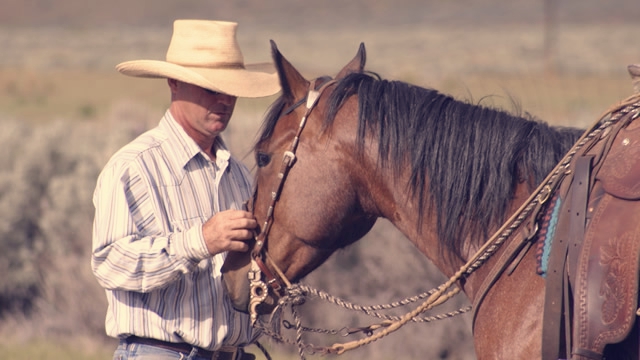Written by Martin Black
This article originally appeared in Eclectic Horseman Issue No.43
Why do some horses have more trouble with their head position than others? This is commonly an issue with horse people, regardless of whether it’s a trainer with performance horses or recreational riders. Often the solution is tying the head down or leverage gimmicks that apply more pressure. In most cases, the person ends up identifying the symptom as the problem.
The symptom is the horse’s head elevated or the mouth open. The popular solution is generally a tie down, martingale, draw reins, more leverage, etc.
The problem from our perspective is our horse’s head is up and the mouth is open. The problem from the horse’s perspective is our hands and/or our weight, compounded by possible dental issues. When we can take responsibility for causing the problem and eliminate the cause, the problem can go away without all the gimmicks.
When we rely on tools or more pressure to treat the symptoms, not only do we cause our horses more grief and confusion, but a big percent of these methods have a low percentage of success. Especially when you consider the side effects they may cause.
There are various things and complications that can cause head problems. For example, when the head goes up and the mouth opens, the message sent from the hands through the reins is not carrying through the muscles and getting to the feet. The rider may be quick to pull on the reins, and the horse doesn’t have time to prepare to position the feet for the maneuver we are asking. This is like dumping the clutch on a stick shift vehicle. If we let the clutch out to the point the vehicle starts to respond, then wait and feel real easy before letting it out all the way, we can learn to make smooth transitions from a stop to a start or one gear to another. But when we are too quick, the vehicle jars and stalls. Very similar to our horses. When we wait and feel for the preparation, we can be smooth. When we are in a hurry, the feet stall and the horse braces against the sudden pressure.
When we cause the horse to brace the neck muscles by pulling too hard or too quick, we inhibit the balance of the horse and his movement. The horse’s movement will not be smooth and natural and neither will his head carriage.
The horse uses his head to balance, shifting from side to side and up and down. Any movement in his head and neck is countered through the shoulders by movement in the back and hindquarters. Like a teeter-totter that moves sideways, one end can’t move without affecting the other.
The other thing that can cause head position problems, or add to other problems is inadequate dentistry. Without proper dental maintenance, the bit can pinch the cheek or tissue on the bars of the mouth against sharp teeth. Even a hackamore can cut the inside of the cheek if the molars are sharp, or if the horse is shedding caps from the molars. Caps need to be checked every 6 months from the middle of a horse’s 2-year-old year through the end of his 3-year-old year or until all 12 molar caps are gone.
Wolf teeth should be removed before even having a bit in a horse’s mouth. The wolf teeth can be sharp against the tissue, and the shallow root can get bumped and loosened, which will irritate him.
Bit seats should be maintained to ensure a rounded surface to prevent any tissue, bars or cheeks, from being pinched between the bit and front molars.
Also, any dentist that has a thorough understanding of equine dentistry will know how to balance the table to relieve any pressure on the TMJ. Equine dentistry is the most overlooked and underestimated problem I see, even by knowledgeable horse people, because it becomes an “out of sight out of mind” situation.
This article originally appeared in Eclectic Horseman Issue No.43


